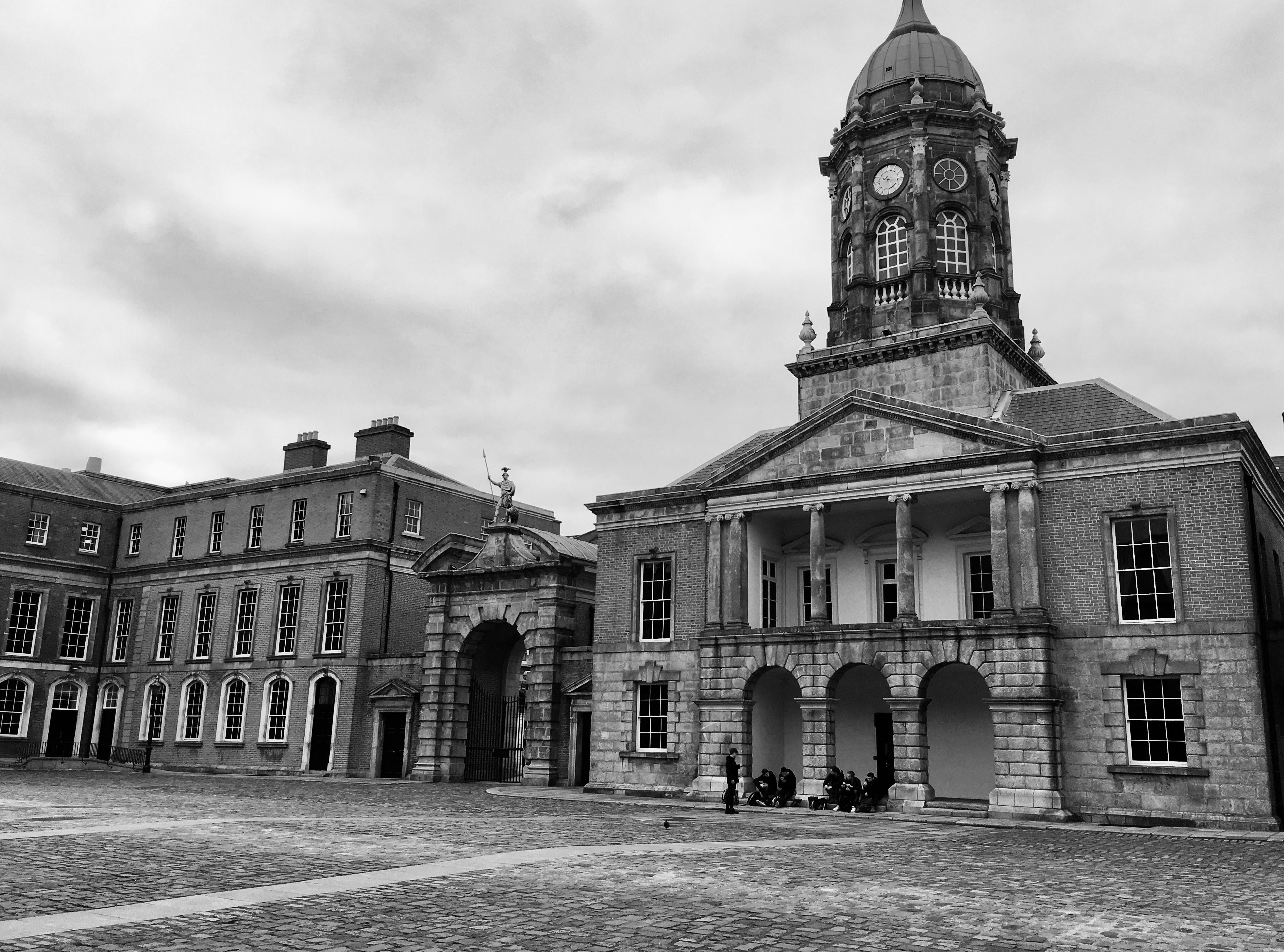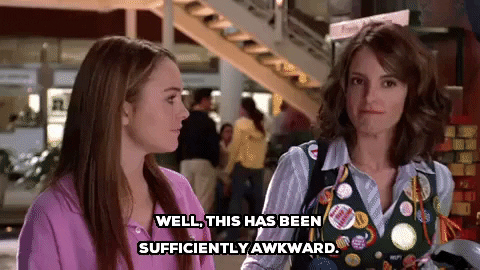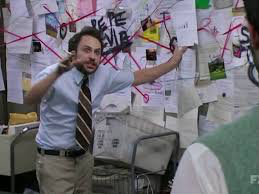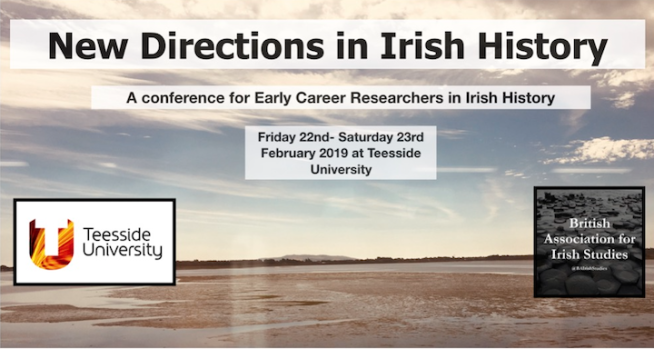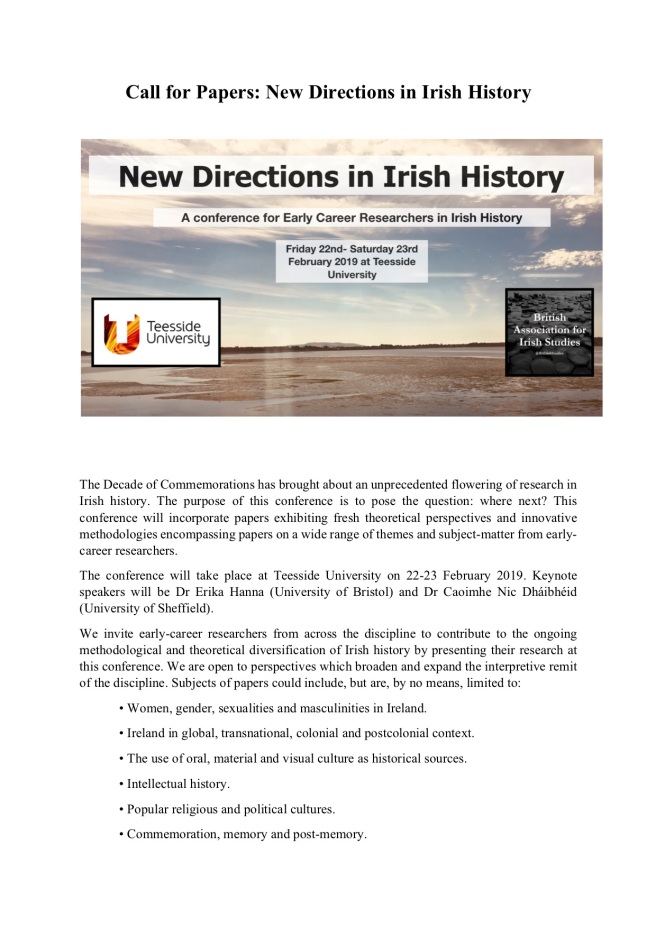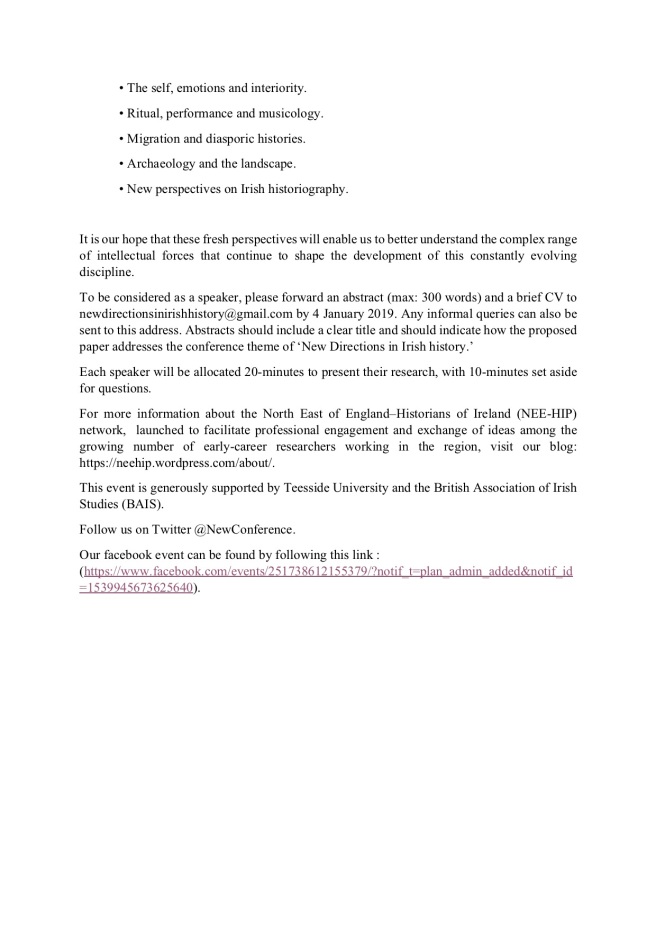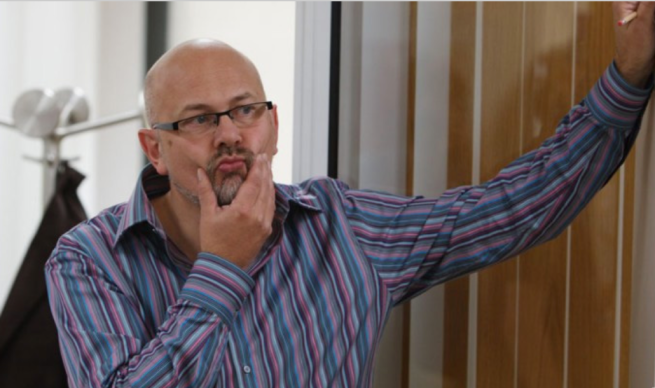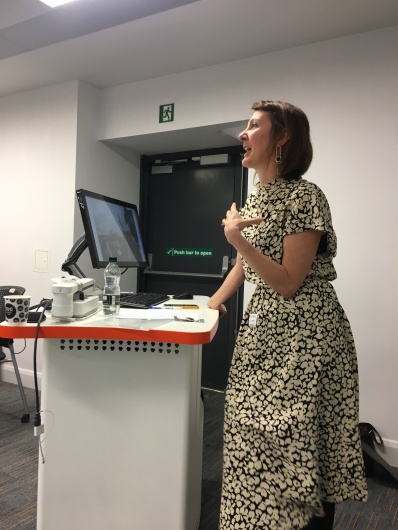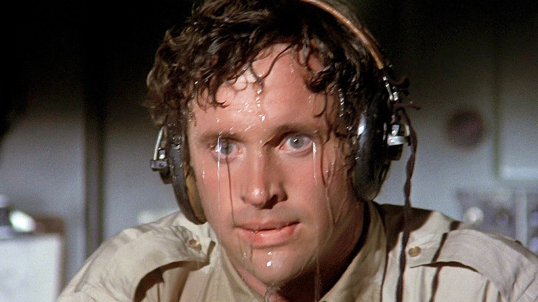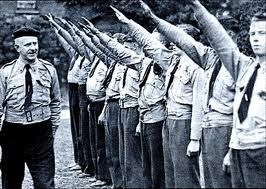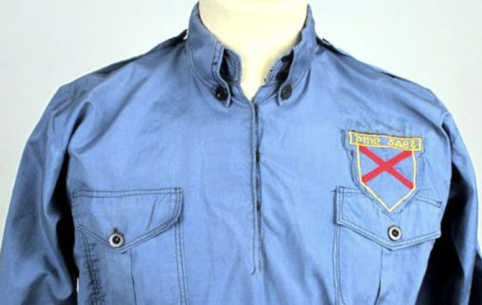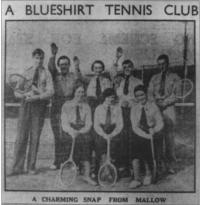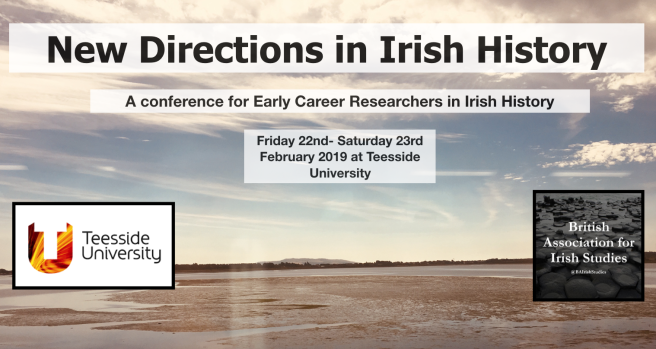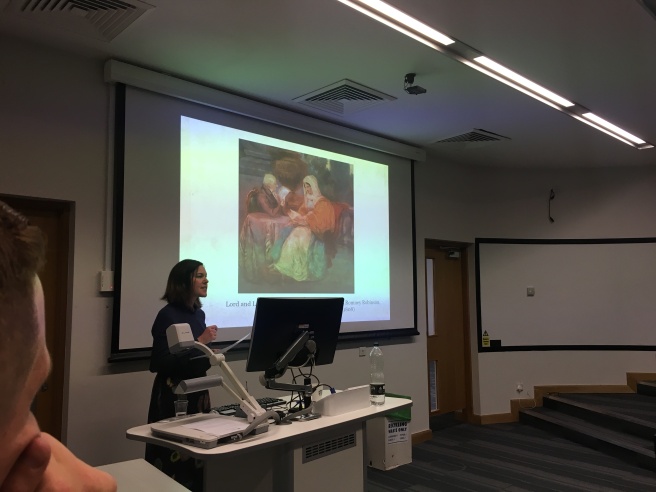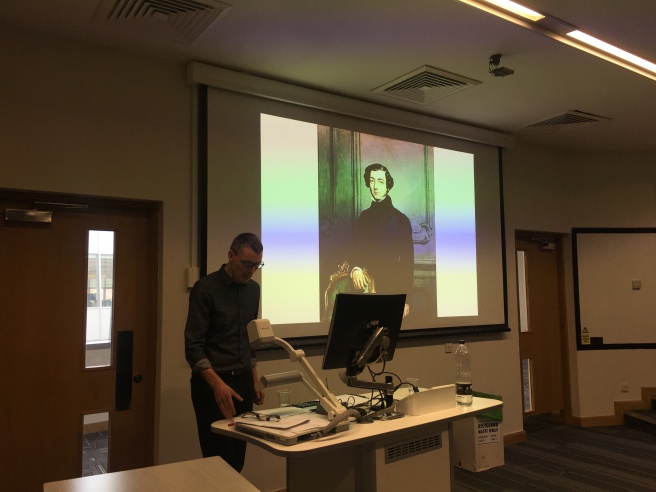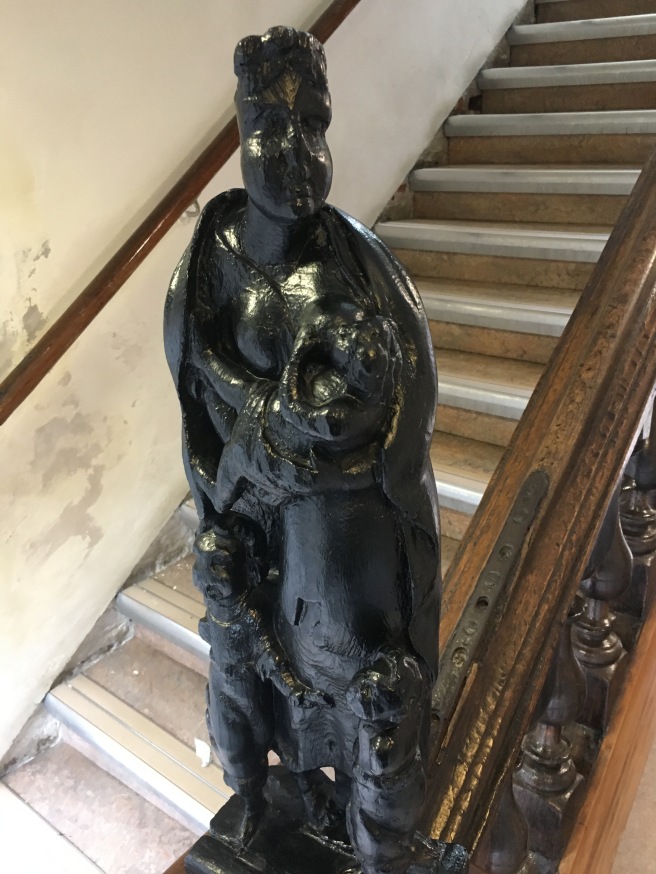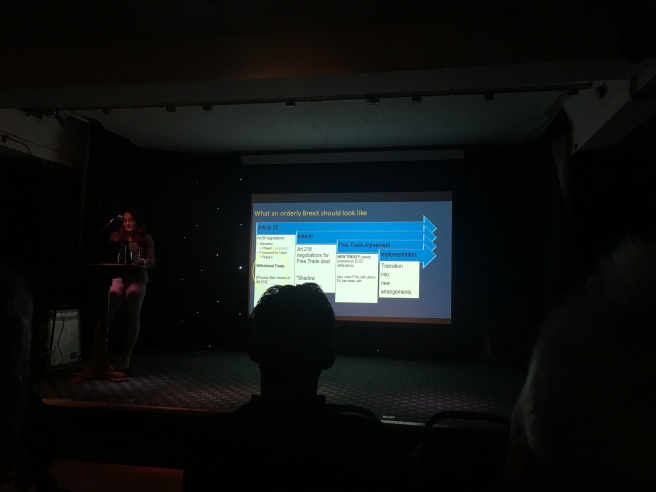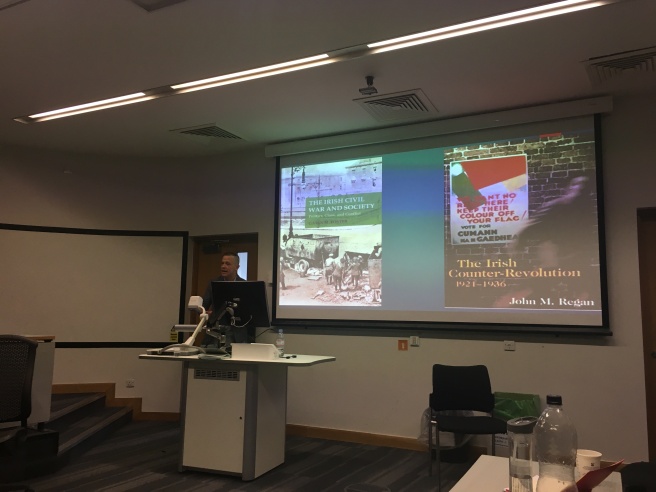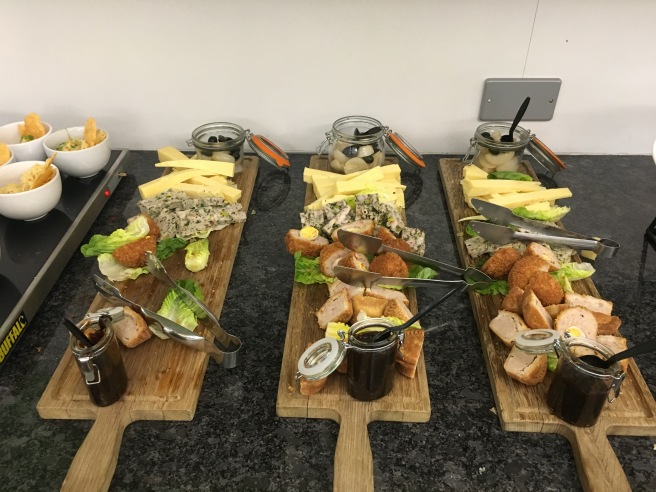On the day that the UK is due to leave the EU, Struan Kennedy (PhD student, Northumbria University) reflects on what Brexit will mean for Northern Ireland.
It would be impossible not to notice how Brexit has increased polarisation across the UK. This is even more blatant in an already deeply-divided society such as Northern Ireland. So it appeared as a topical piece of graffiti near the iron gate on Northumberland street, separating the Falls/Shankill areas. I wish to focus on this public message as well as some historical uses of the phrase ‘No Surrender’ when reflecting on its significance in relation to Brexit negotiations. It is also worth considering the subject matter of the mural that was selected for this amendment. Why choose a celebratory display of the United Nation’s ‘International Peace Day’ (21st September)? Surely a rather ironic surface to undermine the EU when they have been a loyal supporter and major financial contributor through many initiatives, including community-led projects designed to improve post-conflict relations. The following is a summary of peace-funding:
PEACE I (1995-1999)
PEACE II (2000-2006)
PEACE III (2007-2013) Total contribution of EUR 1.3 billion
PEACE IV (2014-2020) value of EUR 270 million[1]
In addition to the above the EU spent £600 million as Structural Funds on Northern Irish economic revitalisation and development. Two decades of substantial good will and European human rights law underpinning the Good Friday Argument of 1998 were perhaps factors why the vote in 2016 ended up 55% remain[2]. Of course such generous support from the EU should come as no surprise given that maintaining and collaborating in the name of peace was at the core of the European project following the calamity of the Second World War. Member states have since bonded closer through the single market, the Euro, the Schengen area and common policy areas. How then did we get to the point where atop the towering bonfires lit before the annual Orange marches read a sign: ‘Brexit. IRA. Scum’ and above that, fluttering in the flames, was the EU flag[3]?
The construction of Loyalist identities are a fluid process involving collective remembering, values, myths and norms[4]. Yet elements within this process are noteworthy for a remarkable historical consistency. An ideology of conflict provides structure to a well-known narrative. Starting with the Plantation of Ulster, theirs has been a separate community, distinct from the numerically superior native Irish. Since then the view of the Protestant people suffering besiegement and massacre, from the 1641 rising to the Troubles, has endured. Just as telling are the methods attributed to this community’s survival and success: stout resolution and resistance to compromise, though ultimate victory can never be secure. This requirement for sustained resistance aligns past experiences— through the reshaping of narratives— to present concerns[5]. Memory matches up past and present with the two often meeting on walls. Walls are heavily loaded with meaning, for both communities, with one foundational loyalist memory being the 105-day siege of Derry in 1689. For many, the city’s old walls convey contemporary fortitude with the siege’s battle cry of ‘No surrender!’ appearing in many places on and around ‘peacelines’[6].
This stark rhetoric can also be frequently found in political language. The lexicon of the DUP references deceit and deception, at times directed to groups within the wider scope of unionism. Commentators have noticed a ratcheting up of emotive terms since the signing of the Anglo-Irish Agreement (AIA) in 1985[7]. Another feature ever lingering in the background is the notion that the union itself is in danger, gradually eroded by, among other things, a developing relationship between the British and Irish governments. Hence, crisis and constitutional insecurity were both integral to and indivisible from the peace process— or, as some perceive it, the ‘final battle for Ulster’[8]. Throughout this ‘battle’ nothing British was safe from becoming a target for demonisation or even supposed extinction. Into this arena of suspicion enters the EU, not as protector of loyalist culture, but as another potential agent to diminish it. This only increases a sense of insularity for this ‘island behind an island’ as one loyalist put it: ‘You don’t trust the Irish Government, the British Government or the Europeans so there is that danger people feel of being backed into a corner’[9]. Let us now consider more closely what this danger in the corner might be.
For Unionists the backstop symbolises separation between them and the rest of the UK. Conceived as some vague technocratic solution during May’s tenure it amounted, in the words of Arlene Foster, to ‘annexation’ by the EU[10]. It would subject Northern Ireland to rules and regulations set not in Westminster but Brussels, rendering the province to some as a de facto colony of the EU capital. A loss of regional power bears a troubling resemblance to direct rule of 1972 when the conflict spiralled out of control. A wider implication is that such move could be interpreted as a first step on an ever-shortening road toward a united Ireland. This was cause for alarm and anxiety during the peace process, with the Loyalist Volunteer Force (LVF) stating that the ‘North/South’ bodies created to share common issues across the border would serve as the ‘foundation stones for an All Ireland administration’[11]. This stance isn’t without some justification, in 1972 politician Garret FitzGerald wrote that membership in the European Community would ‘likely be uniformly directed towards a path to a united Ireland’[12]. A different reading is offered by Professor Kearney who argued that a new common European identity could shift emphasis away from restrictive nationalism and toward a unity of ‘hearts and mind’[13]. As tempting is it is to commit to this euro-idealism for its ability to assuage unionist fears, Grinheim reminds us that this middle ground would be difficult to develop given the historical convictions of both British and Irish identities[14].
Away from a traditional ideology that posits a zero-sum conflict we can find alternative perspectives capable of disrupting the established order. Just two years after the historic paramilitary ceasefires the Progressive Unionist Party’s manifesto promoted core ideas like commonality, equality and plurality, claiming the party was anti-sectarian and open to any citizen regardless of creed or colour[15]. Their leadership felt that a break with earlier divisive practices could allow for reflection on similarities as the working class of both sides had bore the brunt of violence and continue to live with major disadvantages. The more inclusive embrace of this strand of loyalism has a firm grip on reality in recognising a whole range conversations as opposed to strict binary positions. One binary, ‘dominance vs. defeat’, has required loyalists to maintain the former to avoid the latter in the future, the threat of such consequence perpetuating a no-surrender attitude. A need for nuance shines light on vastly differing interpretations of a crucial vote’s outcome. During the Good Friday referendum the result was sold differently to the two communities: to unionists it was a fixed settlement, to nationalists it was provisional[16]. Echoes can be heard ricocheting between some Leavers staunchly committed to setting the result in stone and Remainers differentiating between the 2016 vote (an advisory referendum) and any future ‘People’s Vote’ (confirmatory).
However complex the border issue is in the current impasse, it is just one part of a political puzzle that makes up post-conflict Northern Ireland. Whilst the UK at large has been embroiled in the Brexit process, the institutions of power-sharing— the heart of the peace accord— have been in the doldrums for more than 1,000 days. With such prolonged shutdown, it’s little wonder that some of the political muscle memory is beginning to atrophy. Truthfully, even when Stormont was operational, peace in Northern Ireland was almost always a fragile one. Thus in 2016, Brexit entered this potential powder keg as a new accelerant[17]. Though some have accused such forecasts as fearmongering, security concerns have been raised by those intimately familiar with the Troubles. Prominent loyalists have warned of the ease to which a constitutional question can sleepwalk backward into a militarized answer. Others relate any similarities through their own past motives: ‘I was 20 when I joined the UVF…If I was 20 now, I would be looking for something to join’[18]. Likewise a leader of the other major loyalist paramilitary group, the UDA, believes a hard border manned by ‘uniforms’ would be a target for dissent Republicans and subsequent tit-for-tat response from loyalists[19]. Whether are not a violent backlash materialises, there can be little doubt that Brexit is simmering just beneath the surface as ‘an unwelcome layer of complexity on top of the complexities we already have’[20].
Faced with such grim prospects a nation often turns, rightly or wrongly, to its leader to guide it through a period of chronic uncertainty. In this particular respect we can see a resemblance during two political crises straddling the Irish Sea. Following the AIA, Rev. Ian Paisley opened his morning service thusly: ‘we hand Mrs. Thatcher over to the devil that she might not learn to blaspheme’[21]. Though initially heard only by his minority Free Presbyterian denomination, Paisley’s influence as leader of the DUP reached a far wider audience. For Paisley any form of negotiation whether with republicans or British or Irish governments represented weakness and even surrender. While preaching in church, Paisley also asserted that the EU ‘challenged the distinctive Christian moral standards of Northern Ireland’[22]. Whilst admittedely lacking the fire and brimstone speechifying, Prime Minister Johnson has recently and repeatedly been challenged over his use of language, specifically in his conscious and consistent refusal to refer to the officially titled ‘Benn-Bill’ in lieu of the more inflammatory ‘Surrender Act’. Johnson seemed unable or unwilling to see any causality between what he as leader says to acts of hate taken by others. Examples in his emotive vocabulary such as ‘betrayal’, ‘capitulation’ and ‘traitor’ even featured in death threats. That those who implored for moderation were women is no coincidence and the harsh reality of this toxic environment was commented on by the Speaker of the House: ‘female members and members of our ethnic minority communities have been disproportionately subject to that abuse and those threats’[23].
The sensitivites around surrender bring us back to the defaced mural, a surface onto which current animosity around Breixt coalesces with earlier repeated cycles of historical usage. It’s a surface where the past uncomfortably mingles into the present. Yet both uses draw attention to a need to reclaim the middle ground that lies between binaries. On this middle ground dialogue is not dangerous and ‘compromise’ is not a dirty word. It is here that we stand a better chance of accepting the mobility of circumstance and not lock ourselves into statically principled positions. If such acceptance is reached then perhaps we can engage constructively, listening as a chorus of voices rather than opposing mobs trading singular slogans.
_____________
References
[1] Diána Haase & Marek Kołodziejski ‘Northern Ireland PEACE programme’ from ‘Fact Sheets on the European Union’ European Parliament (04/2019) <http://www.europarl.europa.eu/factsheets/en/sheet/102/northern-ireland-peace-programme> [accessed 26/9/19]
[2] Sally Hayden ‘Could Brexit Unite Ireland? Uncertainty Reigns North of the Border’ Time magazine (19/7/16) New York City <https://time.com/4410151/northern-ireland-brexit-united-ireland-vote/> [accessed 24/9/19]
[3] Ibid
[4] James White Mcauley ‘Still ‘No Surrender’? New Loyalism & the Peace Process in Ireland’ in ‘Politics and Performance in Contemporary Northern Ireland’ p.58 Issue 1 by American Conference for Irish Studies, University of Massachusetts Press (1999) Amherst
[5] Ibid p. 69
[6] Emily Ravenscroft ‘The Meaning of the Peacelines of Belfast’ Peace Review (2009), 21:2, 213-221, DOI: 10.1080/10402650902877450
[7] Mcauley ‘Still no surrender?’ p. 75
[8] Ibid p. 75
[9] Simon Carswell ‘Loyalists on Brexit: ‘‘There will never be a united Ireland’’ Irish Times (11/7/19) Dublin <https://www.irishtimes.com/news/politics/loyalists-on-brexit-there-will-never-be-a-united-ireland-1.3952819> [accessed 24/9/19]
[10] Naomi O’Leary ‘In Brexit talks, Belfast loyalists see risk of return to violence’ Politico (21/9/19) Arlington, VA <https://www.politico.eu/article/in-brexit-talks-belfast-loyalists-see-risk-of-return-to-violence/> [accessed 22/9/19]
[11] Mcauley ‘Still ‘No Surrender’? p. 66
[12] Jeson Ingraham ‘The European Union and Relationships Within Ireland’ CAIN (1998) <https://cain.ulster.ac.uk/issues/europe/euireland.htm> [accessed 24/9/19]
[13] Ibid
[14] Ibid
[15] James White Mcauley ‘Still ‘No Surrender…’ p.60
[16] O’Leary ‘In Brexit talks…’
[17] Ibid
[18] Ibid
[19] Carswell ‘Loyalists on Brexit…’
[20] Tom Roberts, director of the Ex-Prisoners Interpretative Centre and former member of the Ulster Volunteer Force, a loyalist paramilitary group quoted in Beatriz Rios ‘Brexit impact in Northern Ireland: When peace is at stake’ EURACTIV.com (28/2/19)<https://www.euractiv.com/section/economy-jobs/news/brexit-impact-in-northern-ireland-when-peace-is-at-stake/> [accessed 28/9/19]
[21] Ingraham ‘The European Union…’
[22] Ibid
[23] Paula Sherriff, Tracy Brabin, Anna Soubry and Lib Dem leader, Jo Swinson all argued for the Prime Minister to moderate his inflammatory language from Backlash in Commons over Boris Johnson’s language BBC News (25/9/19) <https://www.bbc.co.uk/news/av/uk-politics-49833623/backlash-in-commons-over-boris-johnson-s-language> [accessed 30/9/19]
